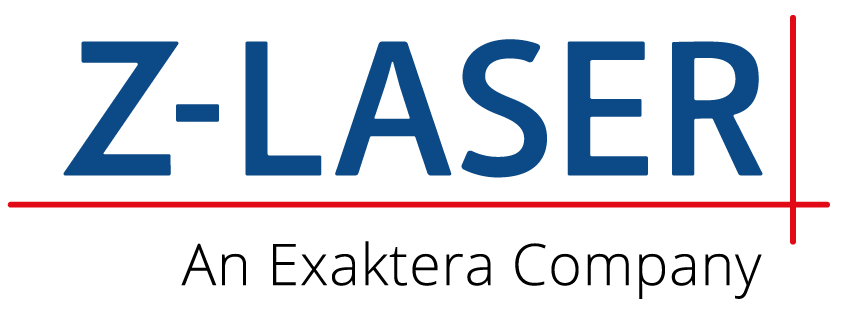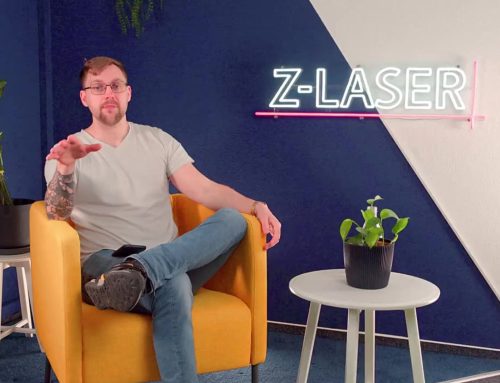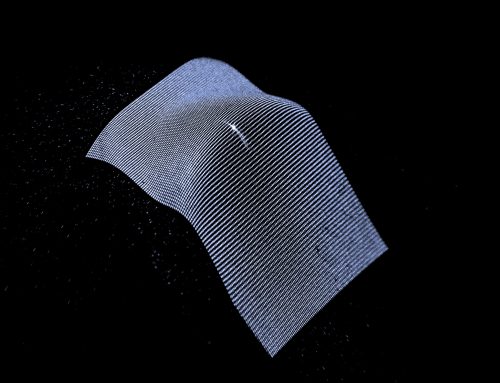The sliding table panel saw, or panel saw for short, is indispensable in any joiner’s workshop. It is the all-purpose tool for cutting solid wood or sheet material. It is also often used for trimming sawn timber, which means cutting it to remove the dull edge (bark). This transforms the plank into a straight board with parallel longitudinal edges, which can then be finished. An essential trimming aid, which has proven itself over many years, is the line laser. It simulates the cutting line by means of a red or green line on the wood. This enables the plank to be processed faster and with less waste, because the operator can cut very closely to the dull edge, as can be seen clearly in this video animation.
There are two ways of mounting a line laser:
1. Installation on the workshop ceiling above the saw:
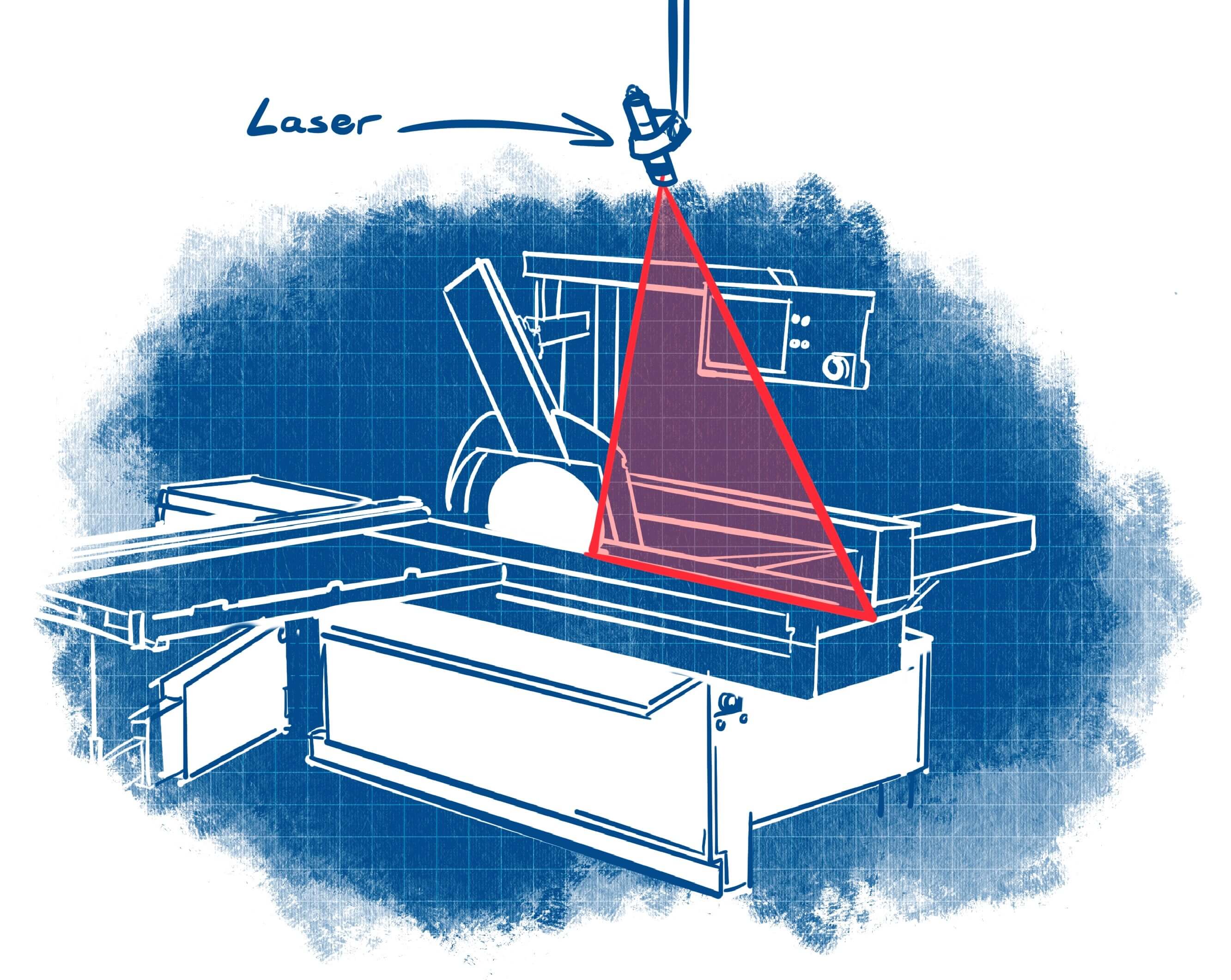
Ideally, the laser should be installed on the workshop ceiling above the machine, approximately above the saw blade. In order to achieve the desired cut length (e.g. 3,000 mm), you need an installation height of at least 1,000 mm above the table. The laser is then tilted at a slight angle (approx. 45° to the horizontal), so that the beam runs away from the saw blade towards the machine operator. In this way, you are facing the optics when you apply the cutting material. For installation on the ceiling, we can offer you our BD laser holder. This consists of a one-metre aluminium tube, which is first mounted on the ceiling by means of a ceiling flange. The aluminium tube (ø40 mm) is fitted with an adjustable/rotatable bracket connecting it to a 50 cm long steel crossbar that runs horizontally. The laser, in turn, is mounted on this crossbar, likewise with a rotatable bracket, and can thus be slid into the right position and fixed there. In order to set/adjust the laser, you should perform a suitably long trial cut and then position the laser so that the projected red line is congruent with the edge of the workpiece. At the same time, it must be ensured that the red line on the front side of the material is also running vertically. Only then is the line guaranteed to maintain its position with varying material heights. Mounts from the H0 series offer all the necessary degrees of movement. The disadvantage of ceiling installation is that you have to check from time to time whether the line is still running where it should. If the ceiling moves (for example, a wooden ceiling under the weight of snow), the laser naturally moves along with it and can become misaligned.
2. Installation on the chip hood:
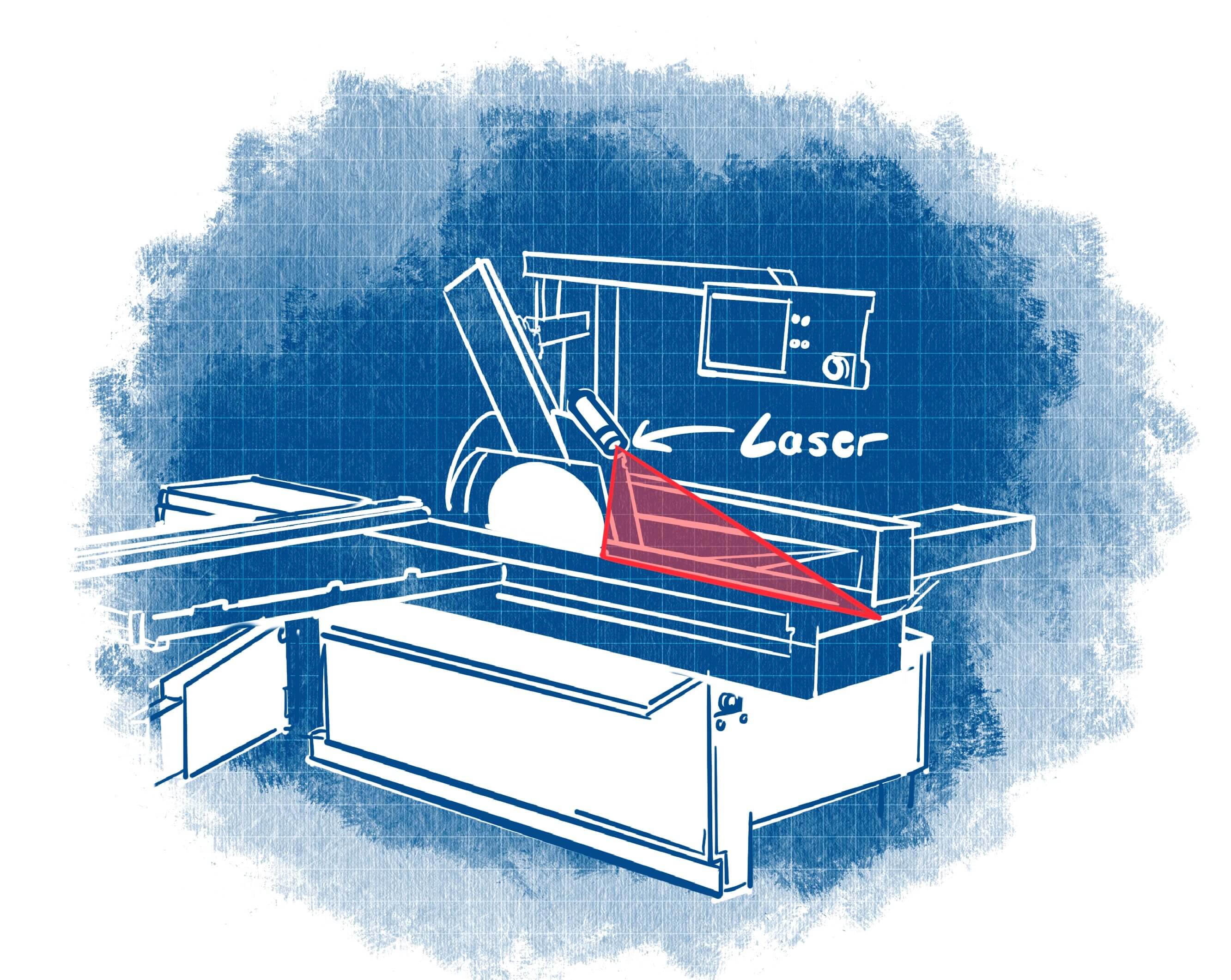
In this case, the laser is mounted much lower, so the line is naturally not as long and its illumination is slightly irregular. However, there are now Z-LASER models that are specifically designed for low installation locations (ZM18-lhi90a series). For reasons of weight, only models of the ZM18 series or smaller are suitable for this installation option. On the chip hood, the laser can be screwed in place with a swivelling holder of the H2 It is powered either via a separate WPS plug-in power supply or directly through the machine control system with 24 VDC.
Challenge for the laser:
Line lasers for wood processing have to be robust and, above all, dust-proof. Red lasers are the most commonly used types to date, as they are clearly visible on most wooden surfaces. In very bright working environments, for instance if the machine is located directly next to a window or under a skylight, green lasers are preferable.
Z-LASER recommendation:
For installation on the ceiling, we recommend red line lasers with a strength of 10 or 15 mW from the ZR or ZPT-F series. For installation on the chip hood, we recommend red or green lasers from the new Zm18-lhi90a series with an output power of 10 mW.
Do you have questions about this or similar applications? Our Sales Stefan Frei will be glad to help you.
